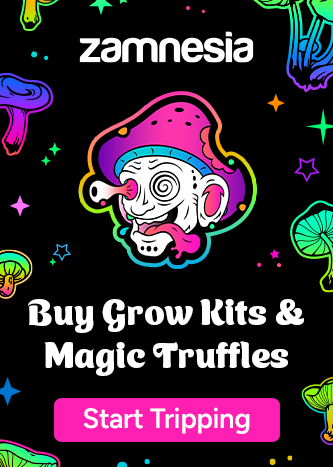When do you start counting the cannabis flowering stage?
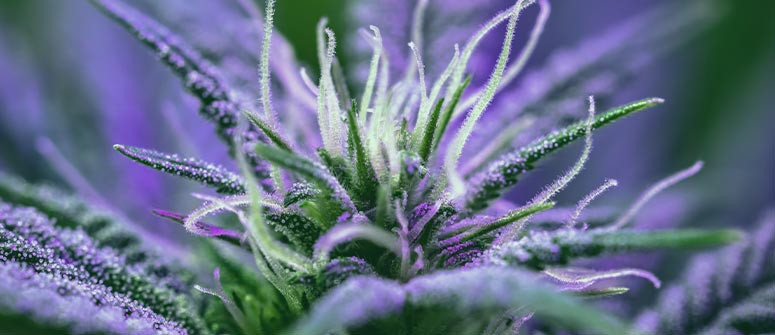
Knowing when your cannabis plant has begun flowering is important. But do you need to count the days? Here we look at the two points from which you can begin counting cannabis flowering, and ask how important it is.
Contents:
When growing cannabis, the beginning of the flowering stage is a very exciting moment. But when exactly is it? When to begin counting the days of the cannabis flowering period is a topic that's up for debate. Here we look at the two different points at which you can begin counting, and ask whether getting it right is that important anyway.
The importance of light for flowering cannabis
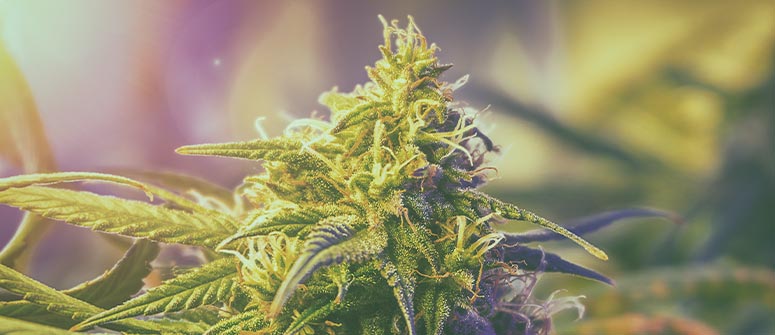
It should come as little surprise that light is crucial when it comes to growing weed. As a plant, cannabis photosynthesises, meaning it uses light to metabolise different compounds and ultimately create energy for itself. Chlorophyll—the molecule responsible for a plant’s green colouration—is responsible for catalysing this reaction with light.
So, as plants need light for energy, it stands to reason that the more light they have access to, the bigger they can get. Within reason, this is true. With cannabis, powerful light means large yields of dense, potent buds. Of course, there is such a thing as too much, but in general, strong light is good.
Light schedule
But, at least with photoperiod plants, you can’t just subject them to constant light. In fact, if you do this, they will never start producing flowers.
Regarding light schedule, cannabis plants have two broad stages: vegetative and flowering. The vegetative stage is when a plant does most of its upward and outward growth, going from a seedling to a tall plant with many leaves. Following this, it enters the flowering stage, where it focuses its energy on producing flowers—with the final goal being reproduction.
Some cannabis plants are known as “photoperiod”, meaning they respond to external light cues to progress through their life cycle. To vegetate without issue, they require at least 14 or so hours of light and 10 hours of darkness per day, though most indoor growers opt for an 18/6 schedule to maximise productivity. In order to start flowering, this light cycle is reduced to 12/12 indoors. Outdoors, this happens naturally as the seasons transition from summer to autumn.
Note: Autoflowering cannabis plants are an exception to this rule, and do not require strict light schedules. More on this shortly.
Knowing when to flip cannabis plants from vegetative to flowering
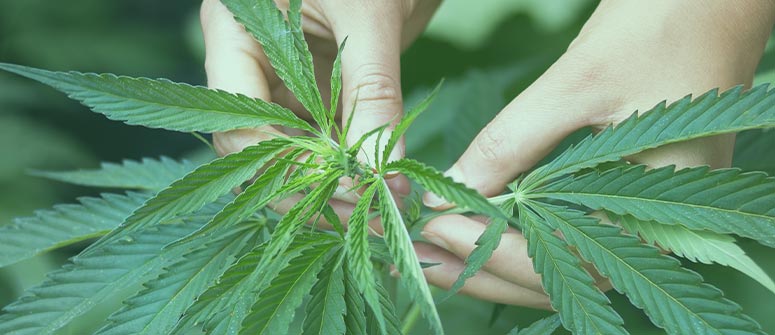
Indoors, cannabis growers can decide when to change to a 12/12 light cycle, and thus decide when the plant enters the flowering stage. There are a few different factors to take into account when deciding when to do this.
Usually, growers will veg their plants for around 60 days before triggering the flowering stage. This gives plants time to reach a big enough size, without them getting too big. In theory, if you had enough space and powerful enough lights, you could keep vegging a plant and let it get very big, resulting in a very large overall yield (per plant).
However, in general, it’s better to grow more, smaller plants, as this creates a better yield per square metre.
Other things to consider are:
- Height: You don't want your plants to get too big for the space.
- Genetics: Generally, indicas will stretch less than sativas during the flowering stage, so take this into account.
- Clone or seed: Clones grow very fast, and can be flowered anytime. However, they need adequate root systems to do so successfully. Seedlings, on the other hand, need at least three weeks of vegetation before they can flower.
- Training techniques: Employing techniques that damage plants (aka high-stress training) means plants will need a longer veg time to recover (this is why training autoflowers can be dangerous).
The cannabis pre-flowering phase
Once you “flip” your plants to bloom, they will leave the vegetative stage and enter the pre-flowering phase. In this short stage, they begin to develop their first pistils and may continue to grow quite a lot.
There is some discussion about whether this is its own distinct stage, or just the early part of the flowering stage.
How long does cannabis flowering last?
This depends on a few factors. Most important is genetics. Different strains have different predetermined flowering times. Some super-fast indicas can reach maturity in around 50 days, while some sativas can take around 100. As an average, between 60 and 70 days is probably a good bet for most strains.
However, knowing the specifics of your chosen strain is important, especially if growing outdoors. A strain that keeps going into the end of October is no good in a cold country.
When to start counting cannabis flowering days
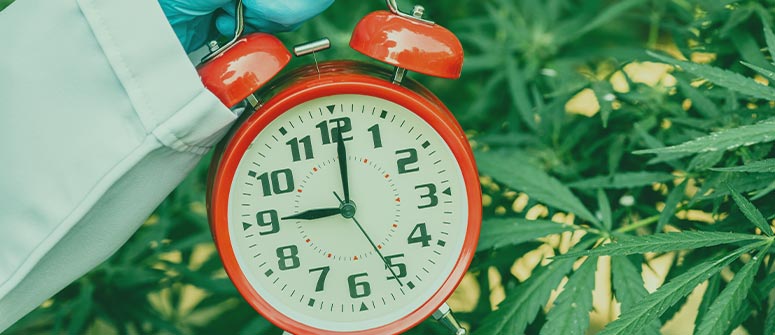
The cannabis community hasn’t made up its mind on this issue. So, on the whole, there are two different points from which growers tend to begin counting the days of the flowering stage.
Counting from the day you flip to 12/12
Many growers just start counting flowering from the day they switch the lights over to a 12/12 schedule. After all, this is the point at which the plant gets the cue to start flowering, so it’s a simple point of departure.
The issue with this method is that—at least externally—the plant may not appear to begin flowering immediately. Whether there is some delay between light change and flowering, or if there are simply some internal changes that occur first, is up for debate. However, there is likely to be a small period during which the plant does not appear to be flowering after you flip the light schedule.
Counting when the first pistils appear
Another method is to wait for the first pistils to appear. Pistils are the little white hairs that begin growing at the plant’s nodes (where the branches meet the stem), and will later cover the buds and turn red/orange.
Pistils mark the very beginnings of bud sites, and are the crucial sign that a plant has begun flowering. So, if you want to take your cues from the plant itself, rather than the environment, this is the best method. There can be no doubt that flowering has started once pistils appear.
When to start counting flowering for autoflowering plants?
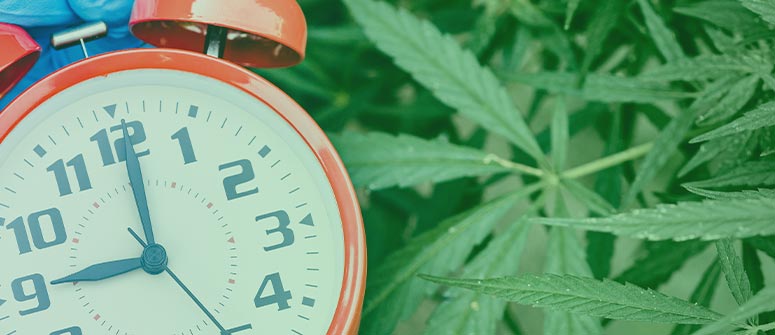
So, what about autoflowers? These strains don’t require a specific light schedule in order to veg or flower. Indeed, they can flower under constant light. Therefore, you can’t force them into flowering, nor can you begin counting flowering simply by switching the light schedule.
Therefore, the only choice you have with autoflowers is to wait for those very first pistils to appear. Then you can be sure that flowers are on their way.
Does the cannabis flowering start date matter?
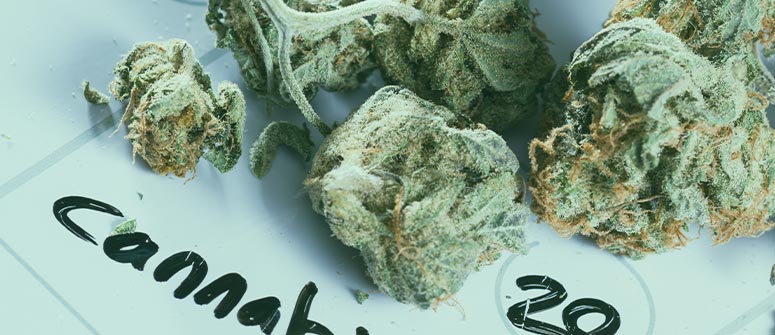
In fact, while it’s a good idea to know how long your plant has been flowering for, it’s not the most important piece of the puzzle. Choosing when to harvest shouldn’t be based on whether your plant has completed it’s supposed flowering time, as these are estimates at best.
A plant will give several signals to let you know that it’s reached full maturity and contains the maximum amount of THC—and is ripe for harvest!
The best signal is to look at the trichomes with a pocket microscope. If 70% are milky white, 15% are clear, and 15% are amber, then you’ve got maximum THC content. Too many clear, and it’s not ready yet; too many amber, and the THC is beginning to degrade. Another good way to tell is if around 90% of the pistils on the flowers have turned red/brown. However, this is far less accurate than checking trichomes.
Ultimately, when it comes to knowing when a plant has finished flowering, trichomes, and not the flowering time, should be given authority.



